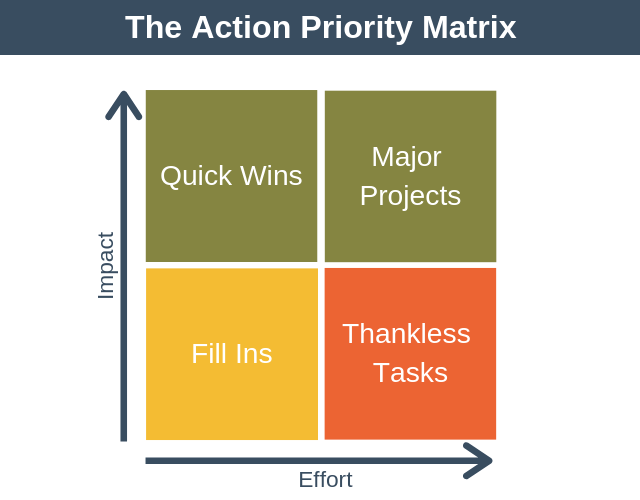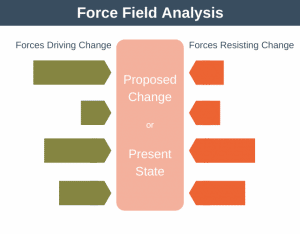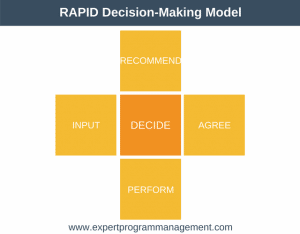The Action Priority Matrix is a tool that enables you to make the most of your time by helping you choose the right tasks and opportunities to pursue.
The world is full of opportunities. Unfortunately, there is never enough time to pursue all of these opportunities. Because of this, you need to choose your opportunities and tasks wisely, so you make the most of your time.
You want to ensure that you choose those tasks that will give you the most significant return on your time investment. You also want to avoid those tasks that don’t move you forward.
Action Priority Matrix
The Action Priority Matrix is a simple tool which can help ensure you’re spending your time working on the right tasks in the correct order.
By working on the right things consistently, you’ll experience improved results over the long-term.

As you can see, the matrix is a two-by-two grid. On the x-axis we have the effort needed to complete a task, going from low to high. On the y-axis, we have the impact on results completing a task will have.
To use the tool, you score your tasks or to-do list firstly by effort and then by their impact. You then place each task on the grid according to its score.
The four quadrants are defined as follows:
1. Quick Wins
These are tasks requiring little effort but which have a high impact. As such, they are very attractive because they have high returns for a small outlay of energy.
Completing quick wins should be your highest priority, and you should concentrate on these tasks as much as you can.
2. Major Projects
These are tasks that can give you significant results (impact), but unlike quick wins, they require you to invest a lot of time into them.
These types of tasks should be your next priority after quick wins. You’ll need to invest a lot of time into these projects to get them done but be careful not to let these tasks consume all of your time.
3. Fill-Ins
These are tasks that require a low effort for you to perform, but they also have little impact on your results.
As hinted at by the name, you use these tasks to fill in your time. You should only perform these tasks if you have the time available after working on your quick wins and major projects.
Consider delegating these tasks if you have that as an option. Alternatively, consider dropping these tasks altogether if possible.
4. Thankless Tasks
These are tasks which have a low impact but which still require a high effort.
You should aim to completely eliminate these tasks, as they are not worth your time to complete.
Using the Model
To use the model, follow these four steps:
- Make a complete list of all of your tasks.
- Score your tasks for effort and impact. You can use any scale you like to do this, but a simple 1-10 scale works well, where one is very low, and ten is very high.
- Place each activity in the matrix according to its effort and impact scores.
- Prioritize your activities:
- Give quick wins the highest priority.
- Spend the remaining time on your major projects. You should spend the majority of your time on these tasks.
- If you have any remaining time, do your fill-in activities. Otherwise, delegate or drop these tasks.
- Eliminate thankless tasks. Spend absolutely zero time performing these tasks.
Action Priority Matrix Examples
Let’s take a look at some examples of tasks that fall into different categories within the matrix.
1. Quick Win Examples
- Give a product demonstration to a potential new customer.
- Call back a sales lead.
- Complete your tax return.
2. Major Project Examples
- Write a book.
- Finish a project to redesign your website.
- Finish a strategic planning exercise.
3. Fill-In Examples
- Book flights to attend a conference.
- Pay an invoice.
- Deal with low-priority emails.
4. Thankless Task Examples
- Browsing Internet news sites.
- Looking at Facebook.
Graphically, these can be mapped to our matrix as follows:

Action Priority Matrix Template
We have an Action Priority Matrix Template available for you to download to help you better prioritize your time. You can download it as a PDF here.

Variations
The model doesn’t just have to be used to prioritize your personal task list. You can also use it in a variety of other ways.
- It’s common to use the model with a team to help prioritize their work.
- You can also use the model if you have a series of projects you want to analyze. In this case, it might improve your decision making if you change the x-axis to Cost and the y-axis to Estimated Return on Investment.
- The Action Priority Matrix is very closely related to the Eisenhower Matrix, which is used to prioritize a personal to-do list using urgency and importance.
Summary
The Action Priority Matrix is a simple decision-making tool which can help you to prioritize opportunities and tasks.
It works by categorizing tasks into four compartments: quick wins, major projects, fill ins, and thankless tasks.
You should perform quick wins immediately. Most of the rest of your time you should dedicate to major projects. Only perform fill ins if you have spare time, and try to drop all thankless tasks.
If you use the matrix repeatedly then over time, as you prioritize what’s important, you should see your results improve.










